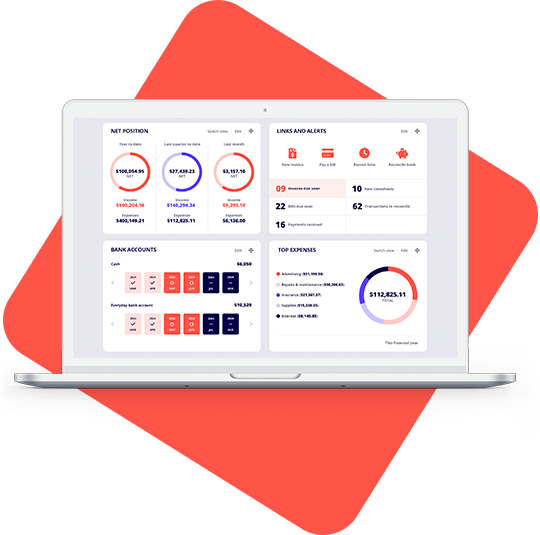Looking for a Cashflow Manager alternative?
Get better bang for your buck with Reckon accounting software
Reckon One pricing starts from only $12/month, Cashflow Manager starts from $26!

Get more features for less
Cashflow Manager ‘Wages Manager’ plan vs Reckon One ‘Essentials” plan

Invoices companion App
Track expenses
Lodge BAS & Tax Reports
Free data migration
Bank feeds
Accept card payments
Phone support
Monthly price
$26.00
$20.00
Cashflow Manager Bank Feeds is available from and extra $5/month. Reckon One’s unlimited free phone support is available during business hours. Data correct as of July 2024.
Better value as your business grows
Unlimited invoices
Payroll software for your employees
including Single Touch Payroll
Unlimited users
so you can share your files with your accountant, bookkeeper, and team.
Migrate from Cashflow Manager to Reckon for free
Moving your data from Cashflow Manager to Reckon is quick and easy with our migration service. It’s free when you sign up for Reckon Plus or Premium plans.
Affordable payroll for all team sizes
Cashflow Manager starts from $26 per month*
And if you wish to have payroll functionality, you will need to subscribe to a gold plan, with prices starting from $47.00 per month**. Ouch!
No version of Cashflow Manager includes bank feeds in the base price, setting users back an additional $5 per month for this feature.

While Reckon One starts from just $12 per month
Even when you scale up the size of your team, we’ll grow with you. Pay from $12/month to manage payroll and send Single Touch Payroll reports for your employees!
Choose Reckon One and enjoy more features, for less!
*Monthly cost of Cashflow Manager plan at the standard price, correct as of July 2024.
**Monthly cost of Cashflow Manager Gold plan, correct as of July 2024.
There are a million reasons to love Reckon
Convinced Reckon One is the perfect Cashflow Manager alternative for small businesses?
Try Reckon One for free, cancel anytime.




